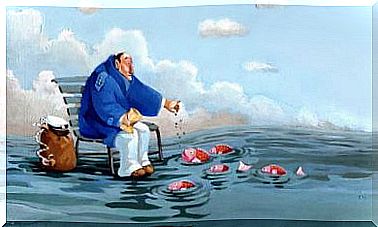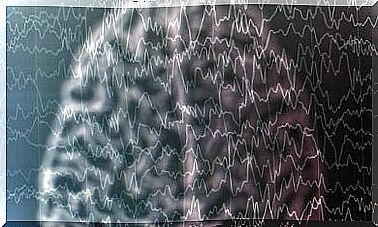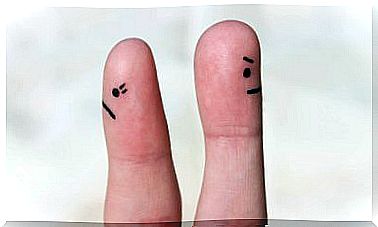The Kübler-Ross Model For The Five Levels Of Grief

Probably the best-known theory about how we deal with death is the model by Elisabeth Kübler-Ross with its five levels of grief. This model describes five different stages people go through when faced with death, be it their own or that of a loved one. Unfortunately, the Kübler-Ross studies have often been misinterpreted, probably because they were not well understood by all readers.
In 1969, the psychologist Elizabeth Kübler-Ross carried out some studies on dying patients. She wanted to find out what factors come into play when we are faced with death. After a long period of research, the scientist realized that her patients all went through very similar stages. She then began to develop her theory of the degrees of grief.
In this article we will try to shed some light on the theory of the stages of grief. At the beginning we will explain each stage. Then we will reflect on what is behind them and what they mean.

The stages of mourning according to Elisabeth Kübler-Ross
The stages of grief include the attitudes people adopt when facing death. They describe what our minds are doing while trying to solve the problem. But since it is not a problem that we can solve, our emotions run amok until we reach a state of acceptance.
- Refusal. This phase involves denying death or ignoring it when it is near. The denial may be total or partial. Denial basically means that our ego takes a defensive stance. Our mind is trying to find a way to maintain our well-being, even though this is a situation where it is powerless.
- Anger. Anger is an emotion that arises when we face an obstacle. After receiving terrible news, it is common for our bodies to try to resolve this through anger. It can have many goals, including ourselves, our doctors, or even God.
- Negotiation. As soon as we realize that anger cannot solve the problem, negotiation will come. We ask fate or some divinity that death should not occur. It is common for people to become “docile” because they hope that if they are just good people, they can live longer. For example, medical instructions follow down to the last detail or confess long-time barred crimes.
- Depression. Most often, depression occurs when the underlying disease worsens or the awful reality reaches consciousness. We then fall into depression because we feel profoundly powerless. The associated deep sadness also means that we waste fewer resources on an unsolvable problem.
- Adoption. Once we get past the feeling of powerlessness, we move into a much less intense, more neutral state of mind. But that doesn’t mean we won’t experience moments of weakness anymore. When we are in the acceptance phase, we internalize everything that has happened, lift our heads and look to the future. We can also begin to interpret the meaning of loss positively without blaming anyone for it.

Evidence for the theory and what it means
The Kübler-Ross theory has been criticized several times. One common, understandable statement made by these reviews relates to how rigid the original theory was. According to the first version, we could only move on to the next stage after we had gone through a stage, or we would stay on the current one. There was no flexibility. However, current research and personal experience show that this is not true. It is common for people to step through the stages in a different order, go backwards, or skip a stage.
Of course, every phase plays an important role. The stages go pretty well with how most deal with their grief. But perhaps it would be best to interpret the various states of mind as attitudes toward loss, not stages.
The Kübler-Ross theory is incomplete, correct. But it was a great step forward in our understanding of grief and grief processing. Kübler-Ross’ research has helped us develop a deeper understanding of the emotions we feel after a loss. For the first time, we were able to provide targeted support to grieving people, which normalized their feelings. The model has also helped psychologists counter anticipated losses, such as incurable diseases.









